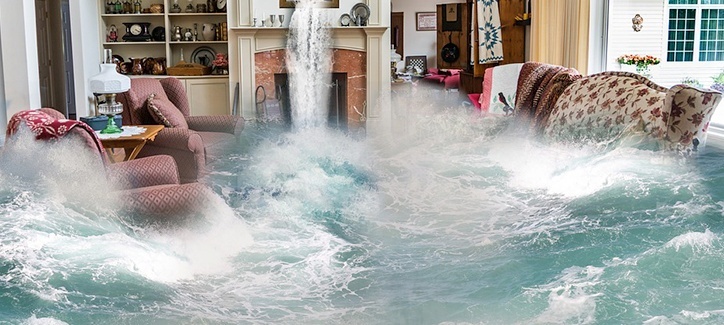
Among the many types of damages that can occur to your home, flooding is not only the most expensive, but is also the most commonly occurring natural disaster to affect homes, families and commercial properties within the United States.
In total, 19 separate floods washed over the nation last year, breaking the record of the most floods to occur in one single year, according to an analysis by Munich Re, a global reinsurance firm. Before that, the record held at 15 separate floods in 2015, raising some serious red flags and concerns regarding the likeliness of a flood causing damages to homes across the county.
The reality of the matter is that, no matter where you are in the U.S., no one is exempt from the dangers of flood damage. Flood damage can strike anyone’s home at any time, causing great devastation and significant financial and personal losses. The key is to reduce your risks of experiencing flood damage by taking the necessary precautions in advance. Here’s how:
- Assess Your Location
Living on or by the water puts you at the most risk of experiencing flood damage. Many people live on the water, but the risks they incur are not all alike. Take the necessary precautions for your specific home. If water levels rise, are you prepared? For people who live by the water, the following protective measures for flooding are often used:
- Heating and electrical equipment should be put on higher levels in your home, including the outdoor installation of equipment.
- Expensive items within your home, such as your television should be mounted up high in the home.
- Build floodwalls around your home, or invest in removable flood resistant gates that can be implemented in the event of a flood warning.
- Know your properties flood zone risk and evaluate your flood risk. If it is high, you may want to consider the option of raising your entire home. Although a costly project, the long-term benefits far outweigh the costs incurred if flooding did occur.
- Get Flood Insurance
Many assume that a homeowner’s insurance policy includes coverage for flood damage, but it doesn’t. Flood damage is only covered by flood insurance, which is a separate policy - and although a flood policy is easy to obtain and implement, a minimal percentage of homes within the United States are actually protected.
Regardless of your home’s location, it is imperative that you get flood insurance. Purchasing flood insurance is easy and can be done at any time. Be aware that a flood insurance policy does take about 30 days to kick in, so the sooner you call, the better to minimize your immediate risks.
- Prepare and Protect on a Daily Basis
There are many easy, reliable ways to protect your home from water damage on a daily basis. Keep your home in good repair and out of flooding harm by:
- Fixing leaks immediately
- Filling in foundation gaps
- Clearing gutters and drains regularly
- Investing in a sump pump
- Preventing sewer back up by installing check valves
Most importantly, if a flood does occur in your home, shut off all utilities and move to higher ground. Do not walk through any floodwaters and stay away from any downed power lines and electrical wires. Evacuate as soon as possible if safe and necessary.
If your home has encountered water damage and is in need of repair, first call your insurance provider and then contact Cornerstone Appraisal & Restoration at 1-888-831-5011. For a list of professional references please contact: info@cornerstone-restoration.com




